
 Data Structure
Data Structure Networking
Networking RDBMS
RDBMS Operating System
Operating System Java
Java MS Excel
MS Excel iOS
iOS HTML
HTML CSS
CSS Android
Android Python
Python C Programming
C Programming C++
C++ C#
C# MongoDB
MongoDB MySQL
MySQL Javascript
Javascript PHP
PHP
- Selected Reading
- UPSC IAS Exams Notes
- Developer's Best Practices
- Questions and Answers
- Effective Resume Writing
- HR Interview Questions
- Computer Glossary
- Who is Who
Antibody-Dependent Cellular Cytotoxicity (ADCC)
Introduction
ADCC is a mechanism of cell-mediated immune response where an effector cell actively involves in the lysis of the target cells which have the antigens bound to the specific antibodies.
If a human body is infected by several pathogens like bacteria, in that case, our body produces antibodies that can neutralize these pathogens. Here in this case of ADCC, several cellular mediators or the effector cells recognize one portion of these antibodies which are bound to the antigens, and engulf the whole cell coated by these antibodies. This is cell-mediated cytotoxicity as it involves the effector cells.
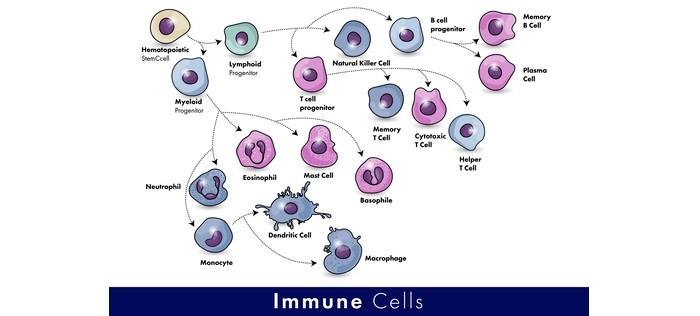
The mechanism of ADCC involves the following steps ?
Neutrophil toxicity.
Opsonization and phagocytosis.
MAC formation (membrane attack complex).
Apoptotic response.
Disruption of the cell function.
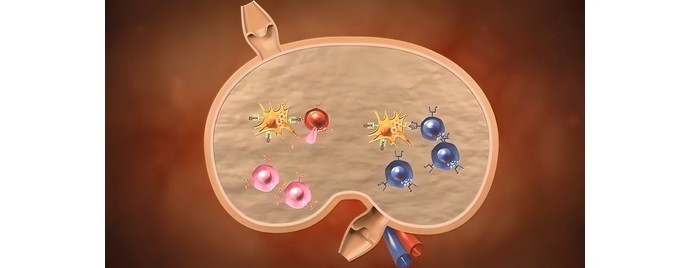
Cell-Mediated Induction of Immune Response
Effector Cells and Their Importance in ADCC
Imagining that a body is infected by a virus, then the immune system produces antibodies against these viruses which then potentially attenuate the virus or disable the virus to enter other cells. This is known as the humoral response.
In the case of an active virus, it can interact with the cell surface receptor and thereby enters the inside of the cell.
The attenuated virus cannot enter the cell as it is blocked by antibodies. Several effector cells recognize these antibodies and ultimately engulf the whole attenuated virus and leading to its destruction.
Effector cells are several types of cells that have Fc receptors helping them in binding with the antibodies. Some of these cells include dendritic cells, neutrophils, NK cells, macrophages, etc. Among all these, the most potent effector cell is NK cells.
These NK cells have specific Fc receptors only to the IgG1 and IgG3 type of immunoglobulins, hence these receptors are called Fc?I and Fc?III receptors. As here the NK cells depend on the antibodies to carry out the destruction of cells it is hence known as antibody-dependent cell-mediated cytotoxicity. Here the NK cell produces 2 chemicals when it recognizes the antibody through its receptors.
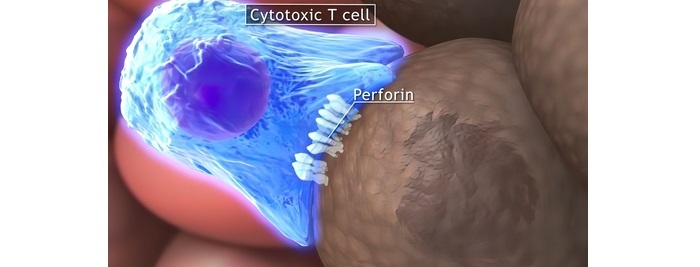
These chemicals are named perforins and granzymes. Here perforins are the proteins that actually form a pore-like structure within the plasma membrane when attached to the target cells. Granzymes are other chemicals that enter through these pores formed by the perforins and digest the cell resulting in cytotoxicity.
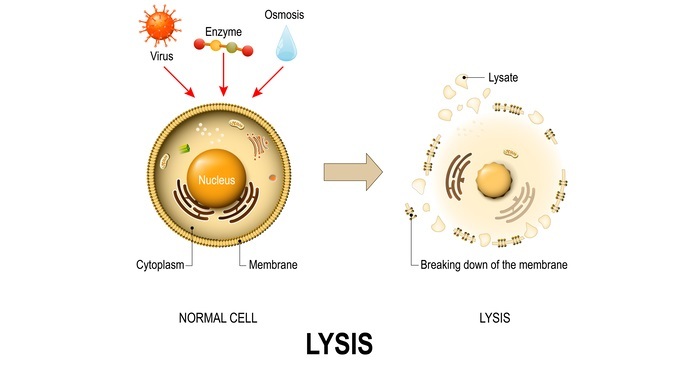
Type II hypersensitivity
Antibody-dependent cell-mediated cytotoxicity ADCC is associated with type II hypersensitivity which is mediated by IgG antibodies. Cells that take part in these hypersensitivity reactions are natural killer NK cells, macrophages, neutrophils and eosinophils of our immune system. Out of all these, NK cells are most common.
During hypersensitivity reaction, the body can also respond to its own components that are usually ignored. In type II reaction this response is caused by the presence of certain antibodies. Under normal conditions antibodies are produced during an adaptive immune response to fight the pathogens.
In type Ii hypersensitivity the antigens are located on the cell surface or is a part of the connective tissue. This leads to an antibody-mediated immune response to the body's own cell. The antibody mediates the cascade of events that can cause cell lysis, phagocytosis or apoptosis. Therefor type Ii hypersensitivity reactions is also called as antibody dependent cell mediated cytotoxicity ADCC.
To eliminate these target cells with surface antigens, our immune system first produces Ig G antibodies which binds to the target cell through surface antigens. Then NK cells recognize the Fc region of an antibody and binds with them through Fc receptor which is the CD16 region present on these cells. NK cells has tendency to send signals to these target cells and later eliminates or kills it. Here NK cells releases the interferon gamma or IF gamma will kill the target pathogen.
Example of hypersensitivity reaction is seen during mismatch blood transfusions. Imagine a situation where the person with blood group A gives blood to the other person with B blood group which is a mismatch blood transfusion.
Here in person with A blood group, there would be anti-B antibody in the plasma and A-antigen on the surface of RBC while in the recipient with blood group B has the anti-A antibody in plasma and B antigen on the RBC surface. So when this transfusion occurs, the anti-B antibody from the donor will eventually bind to the B antigen of recipient.
Then this will attract the attention of the other effector cells like NK cells which would eventually lead to the destruction of RBC. The RBCs could also be destroyed by complement mediated lysis. So this shows that ADCC is a potential mechanism underlying type II hypersensitivity responses.
Applications
Principles of ADCC can be used for cancer treatment. When a virus is infecting a human cell, these cells first express the viral proteins in the plasma membrane.
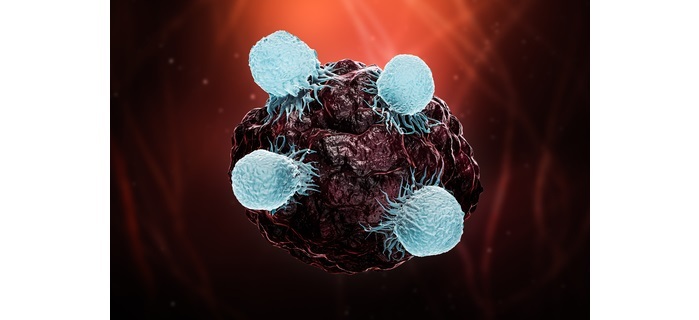
White blood cells or T lymphocytes or natural killer T attack a cancer or tumor or infected
Here in case of tumor cell, it expresses the specific antigens on their surfaces which are known as the tumor antigens or neo antigens. This expression of neo antigens starts when the normal healthy cell undergoes some mutations to form a tumor cell.
This mutation results in the production of a new antigen called Neo antigen. If a researcher has developed monoclonal antibodies like IgG1 and IgG3 for these tumor antigens, then other effector cells like NK cells can engulf or destroy the tumor cell by recognizing the Fc region of these specific antibodies by potentially reducing the tumor volume. This is the ongoing unknown research topic.
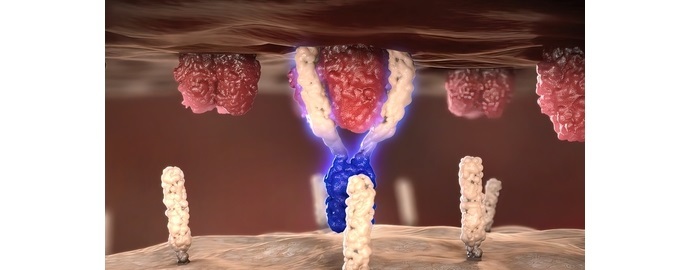
Antibody receptor that protects from cancerous cells
Conclusion
When there is an intracellular infection by virus and parasite which is infecting is large, in both the cases phagocytosis cannot eliminate the pathogens or target cells. In such cases a different mechanism is used by or immune system which involves antibodies. Antibodies coat the target cells with the parasite.
Infected cells display foreign antigen derived from the virus on the plasma membrane. Antibodies bind to these antigens and Fc regions of the antibodies are recognized by leukocytes having killing or cytotoxic function. Example of such cell are natural killer cells, eosinophils etc. as these cells have Fc receptors on their surface which helps them to bind to Fc region of antibodies.
The binding results in the degranulation of the cytotoxic cell. Cytotoxic chemicals are released which disrupts the plasma membrane of the target cell and finally the lysis of cell. This whole mechanism of pathogen elimination is known as antibody-dependent cell-mediated cytotoxicity ADCC.

